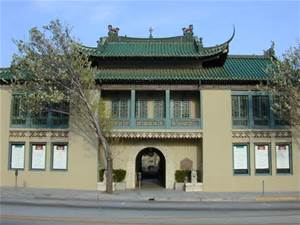May 15 2016 - Jun 26 2016
Pasadena, CA
Literati culture (the ideal of the scholar-gentleman) provides a thread connecting East Asia. Developed in China by the 11th century as a kind of “alternative” way of life and expression, arguably this is a culture of shared individualism. Visually, it is manifest through expressive brushwork in painting and poetry. As spaces of creation across time, picture-and-poem scrolls connect with—and comment on—past and present.
In Japan, where Chinese culture was often “misunderstood” or willfully adapted, the work of China-oriented intellectuals had diverse implications. The literatus (bunjin) possessed rarified knowledge and thereby sophistication. In the 18th and early 19th centuries, literati painting (bunjinga) might implicitly critique the government, whose authority rested on orthodox ideas of Chinese art. For establishment artists, it demonstrated the government’s cultural breadth. From the founding of the Meiji era in 1868 through World War II, the expansion of the Empire of Japan meant the contraction of imperial China. Thus, literati painting could demonstrate Japan’s hegemony over continental culture, or a common East Asian civilization. With its emphasis on self-expression and physical gesture, literati painting also functioned as a kind of “Oriental modern.”
Scholar-gentlemen often acquired old and new paintings. They copied paintings and also studied painting history, even debating the role of Chinese-oriented painting in shaping national identity. As collectors, literati ensured the circulation of objects and created art markets. They also fostered public display of art, first in casual viewings by like-minded men, then, from the late 19th century, in formal museum exhibitions.
Exhibition overview from Museum website
Exhibition Venues & Dates
May 15 2016 - Jun 26 2016
Pasadena, CA
